Table of Contents
Stretching or a warm-up are the core of every training plan, which is unfortunately often forgotten. At the same time, it plays a really important role in building muscle, reducing muscle pain, and eliminating injuries. Read what stretching techniques we know and what benefits they have. [1] [2]
The difference between stretching, warming up and cooling
The difference between stretching and increasing your body temperature before training lies in their purpose. The goal of stretching is to increase flexibility and range of movement of joints. However, when warming up, it is important to increase body temperature and blood flow to the muscles. Both of these techniques are usually performed before training, but you can do stretching after along with the cool-down. However, all three forms of exercising techniques are part of one complex, which is called the warm-up. [1] [2] [3] [4]
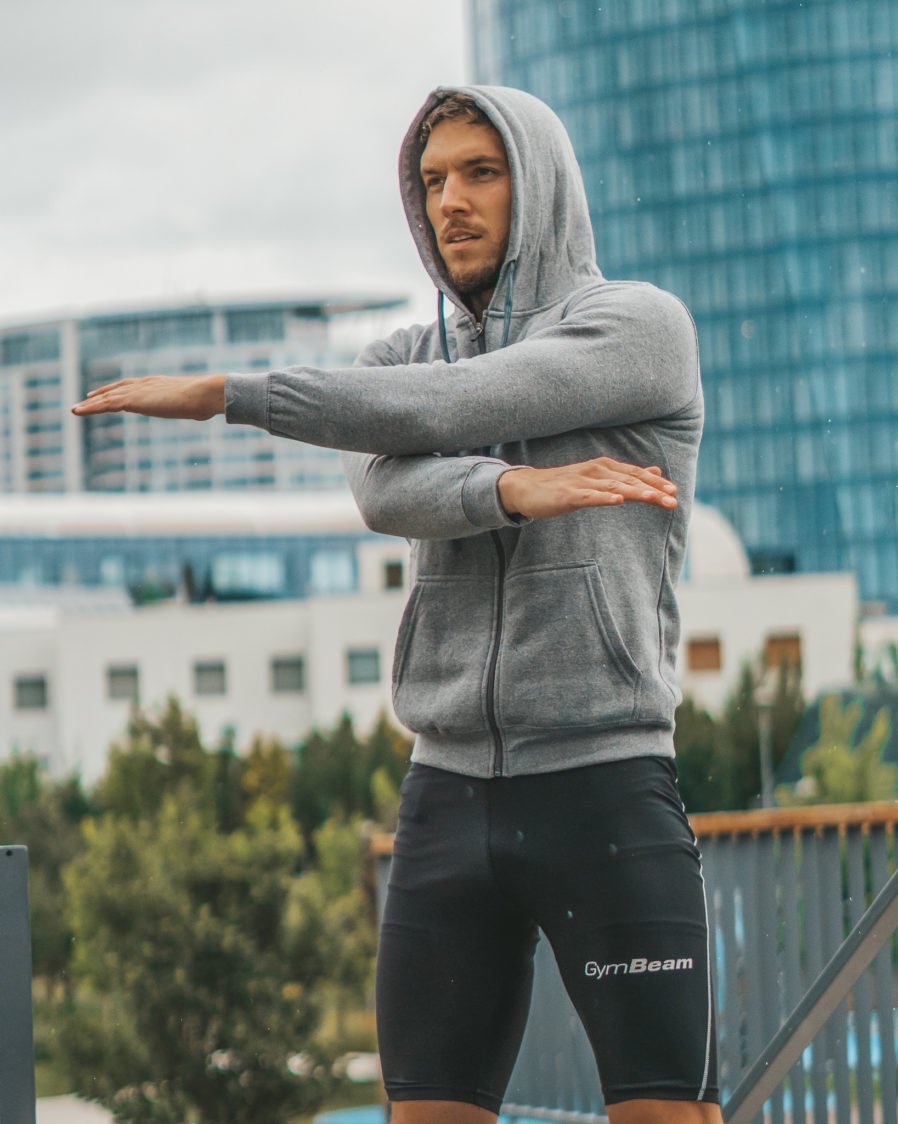
Warm-up
Warming up before training functions as important prevention of injuries. Proper warming revitalizes the cardiovascular system by increasing body temperature and blood flow to the muscles. [2] Warming up also prepares your muscles for overload during training. If the muscles are sufficiently warmed up during warm-up, this will increase the range of motion and reduce the risk of injury during exercise. Examples of a good warm-up are aerobic exercises, such as cycling, walking, or jogging, which you should do for at least 5 to 10 minutes.
Cool-down
Your heart rate is increased and your muscles are tense after training. The purpose of cooling down is therefore to return the heartbeat to normal and prevent muscle pain. An example of cooling after training is, for example, fast walking with gradual deceleration. Cooling down is very important for endurance athletes, such as marathon runners, because it helps them regulate the flow of blood in the body after a long period of physical activity.
Stretching
The stretching of the muscles can be done before or after the workout. Its main purpose before training is to improve the extent of movement of the joints and reduce the risk of injury during exercise. You can try stretching your entire body or just focus on a specific group of muscles that you plan to train afterward. After training, however, stretching fulfills a completely different function and its purpose is to prevent muscle pain. Stretching can also be very relaxing, both physically and mentally.
Benefits of stretching and muscle warm-up
Improves performance
Inevitably, the best benefit of stretching or warming up your muscles is their impact on your performance which can be improved by the three effective ways:
- Improves blood flow – warming up or stretching for about 10 minutes has been shown to improve blood flow and open blood capillaries, which have been associated with improved subsequent physical performance.
- Improves oxygen function – oxygen is released into the muscles faster at higher temperatures. If you do the stretching before training, you will warm up your muscles, and they will be ready to give the best possible performance during exercising. If you don’t do the stretching, it can take a long time for oxygen to be released into your muscles during your workout, which can harm your performance.
- Accelerates muscle contractions – warming up before training raises body temperature. This results in better nerve transmission and muscle metabolism. As a result, your muscles will act faster and more effectively on all stimuli during and after training. [5] [6] [7]
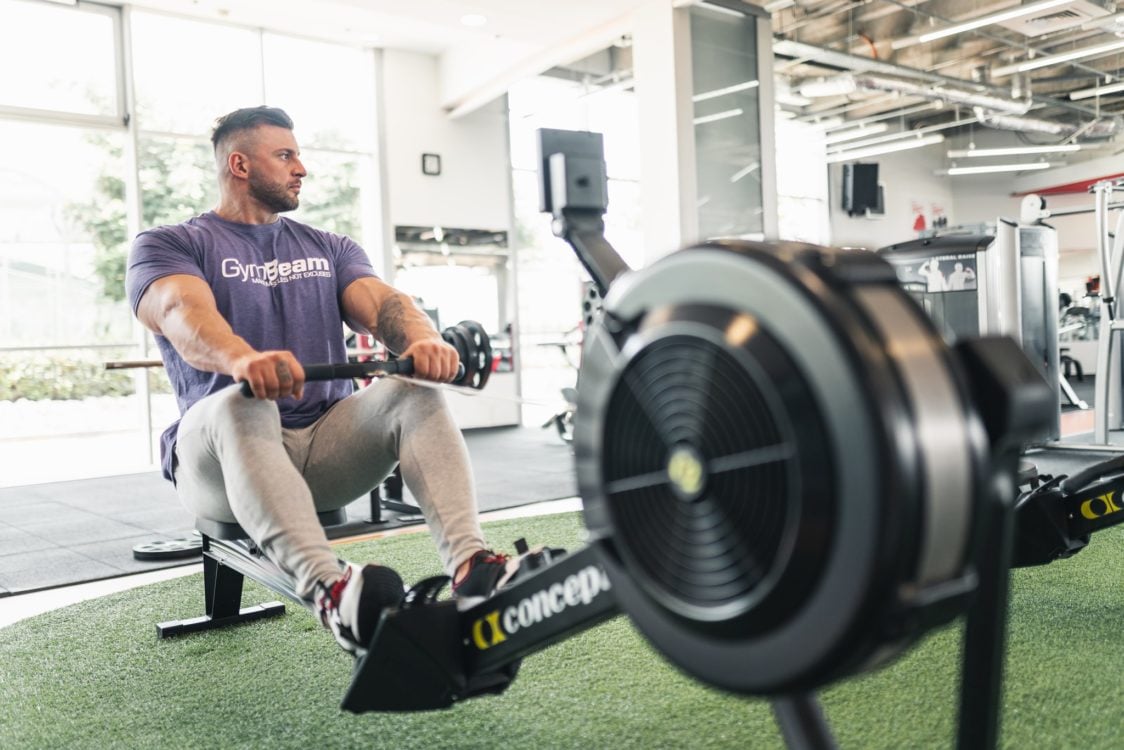
Prevention from injuries
With an effective and consistent warm-up before training, you relax the joints, increase their range of movement, and improve blood flow to the muscles. All of these aspects are extremely important in preventing injuries. The more your muscles are stiff and bloodless, the higher the risk of injury during exercise. [5] [6] [7]
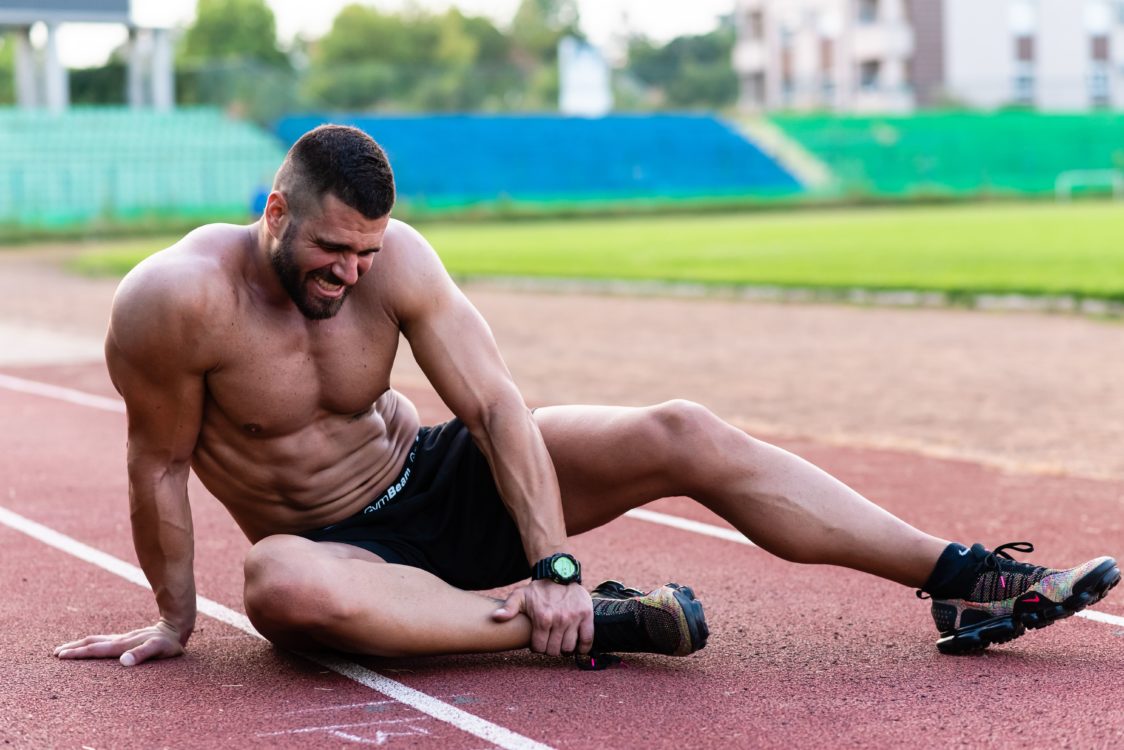
Removes heat from the body
Activation of heat removal mechanisms from the body contributes to the effective cooling of muscles, which helps prevent overheating and subsequent overtraining. This benefit is especially important for demanding aerobic activity, such as running or cycling. [5] [6] [7]
Balances the production of hormones
During physical activity, the body increases the production of various hormones, including cortisol and adrenaline. They are directly responsible for regulating energy production and your physical performance. If you miss a warm-up before a workout, these hormones may be activated late and have no effect. On the contrary, you can activate them already during a warm-up, which will give your body enough energy during training. [16] You can read about the influence of hormones on the growth and regeneration of muscle mass in our article What effect does hormonal imbalance have on the muscle mass of men and women?.
Benefits of the cooling-down
Supports fast recovery after training
After intense and strenuous training, lactic acid accumulates in the muscles. It is an organic substance that is formed during the breakdown of glucose in muscles. At rest, the body forms only a small amount and is transported to the liver, where it is converted back to glucose. However, during increased physical activity, more glucose is formed, which also creates a higher level of lactic acid, which the liver cannot process. Therefore, it is stored in the muscles and causes cramps, muscle pain, or even muscle fever. It is the cooling phase after training that can help the process of eliminating lactic acid from the muscles. This helps to recover faster and prevents muscle pain. [5] [13] Creatine supplementation, which also supplies the muscles with energy, has proven to be another great means of reducing lactic acid production during training.
Reduces muscle pain with delayed onset (DOMS)
Delayed Onset Muscle Soreness (DOMS) usually begins a day or two after training. The pain you feel during or immediately after a workout is another type of muscle pain, also called acute muscle pain. This is due to the above-mentioned reason for the formation of lactic acid and is accompanied by pain immediately after training. [14]
DOMS can be caused by any exercise that creates small microscopic cracks in the muscle fibers. The body responds to this damage by increasing inflammation, which can lead to a delayed onset of muscle soreness. Symptoms of DOMS or muscle pain that you should watch out for may be as follows:
- touch-sensitive muscles
- reduced range of motion due to pain and stiffness when moving
- swelling of the affected muscles
- muscle fatigue
- short-term loss of muscle strength
Research has shown that effective prevention of DOMS is cooling down after training with a warm-up and muscle stretching, or massage of individual stressed muscle areas. [14] If you want to learn even more about muscle pain, and how to prevent it, read our article Is it true that muscles grow faster when they hurt?
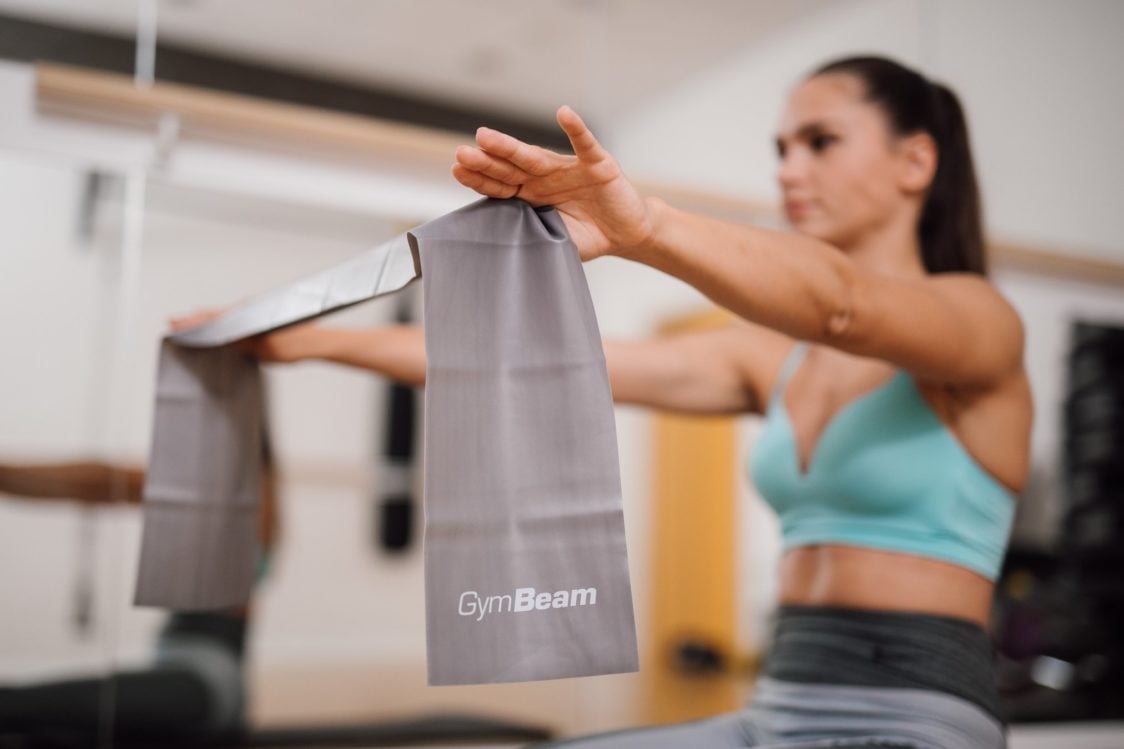
Types of stretching
Just as there are different types of training, there are several forms of stretching. When warming up, you can focus on static, dynamic, but also ballistic stretching. Let’s see what the difference is between them. [8] [9]
Static stretching
This is the most common type of stretching. Its technique is to stretch a muscle, or group of muscles, to its farthest point, and then maintain that position. This type of stretching is considered to be the safest way to stretch muscles. It gives muscles and connective tissues enough time to relax.
Static stretching is usually done before strength training, by stretching the muscles you are going to exercise. However, many experts consider this type of stretching to be much less effective than dynamic stretching, as dynamic warm-up increases the range of motion significantly.
Dynamic stretching
Unlike static stretching, dynamic stretching is a popular way to warm up muscles before aerobic exercise. The dynamic warm-up consists of maximally warming up the muscles by repeating the movement several times in a row. The purpose of dynamic stretching is therefore to improve flexibility before performing any sport, running, cycling, or other aerobic activity. An example of dynamic stretching is, for example, a sprinter who takes excessively long steps before running to set the maximum range of motion for the upcoming performance.
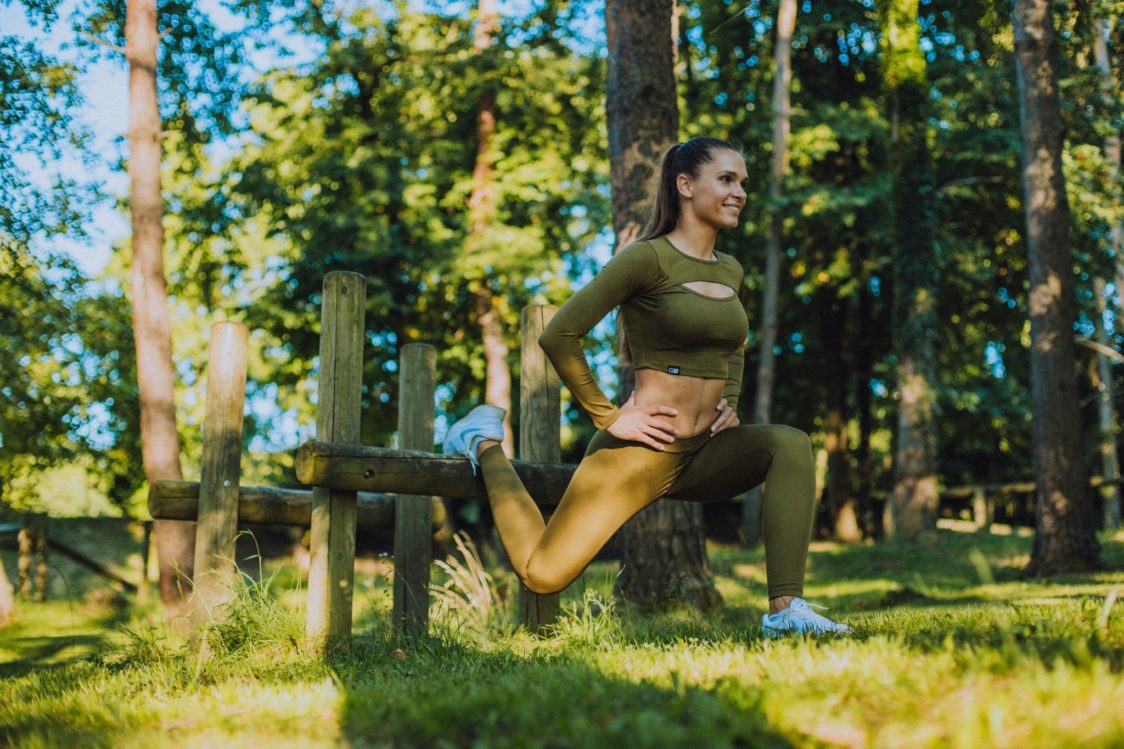
Ballistic stretching
Many exercisers confuse this type of stretching with dynamic stretching. However, there is a significant difference between them. The basis of the dynamic warm-up is formed by regular repeated and intentionally coordinated movements. However, ballistic stretching uses irregular, jerky, mostly aerobic movements, such as intense jumping or sprinting. At the same time, the limit of the maximum range of motion should be exceeded during ballistic stretching. However, it is important to note that this type of stretching is more prone to injury and should only be performed by experienced athletes.
Passive stretching
Depending on the type of force acting, stretching can be divided into passive and active. Passive stretching occurs when an external force helps to reach the maximum point of the range of movement. This can come through gravity, another person, or a tensioning device, such as resistance bands or suspended strengthening systems. The point is that the muscle you want to stretch is not primarily stressed, so you can relax while stretching. Passive stretching is extremely effective in relieving muscle cramps that are being treated after some injuries.
You might be interested in these products:
Active stretching
Active stretching is characterized by the use of your own strength to maintain a stretching position. So this is the opposite of passive stretching. An example is lifting your foot off the ground while lying down, using only the power of your feet to keep it in the air. For passive stretching, you would use arm support, for example, to keep your foot in the air. Active stretching is therefore much more demanding, but more effective in building muscle and flexibility.

Myofascial release
A foam roller or other massage device is used for this type of stretching. Its application to the muscles relieves myofascial tension and improves flexibility in the fascia. The fascia is a specialized system of connective tissue that unites the whole body. It affects bones, muscles, joints, nerves, and is also found in the brain and spinal cord. Therefore, it is important to take care of the fascial system and stimulate it regularly. The tension at one fascial point also affects more distant places, as it is a closely interconnected system. Therefore, if you feel the tension in the calf, believe that this tension is not only in the calf but also in other parts of the body. [17]
How to do proper and effective stretching
- Duration of stretching – several studies suggest that stretching or cooling down one muscle part should take approximately 30 to 60 seconds. [15]
- The number of repetitions – depends on several factors, such as your physical condition, age, or gender. However, you should not overdo it with stretching and do as many repetitions as you can. It is important to listen to your body.
- Breathing – this will help you relax properly. You should inhale slowly before stretching a muscle and exhale slowly as you stretch it. Exhalation should not be enhanced, but natural.
- When to do stretching – To achieve optimal results and prevent injury, stretching, warming up the muscles, and cooling it down should be part of every training plan.
Types of stretching according to muscle parts
You already understand the theory of stretching and warm-up, it’s time to start exercising. What should such a stretching session look like? It all depends on which muscle group you decide to train. However, it is optimal to focus on stretching the whole body. [10] [11] [12]
Full body stretching
The advantage of stretching the whole body is that no matter what workout you are going to do, every muscle will be properly stretched. The basis is to start from the head and gradually move to the feet, while not forgetting any muscle part.
You can also see an example of proper stretching of the whole body before training in the video:
Stretching of individual muscle parts
An increasingly popular technique, especially for bodybuilders or fitness lovers, is to focus stretching only on certain muscle areas. Specifically for those that you are going to strain after stretching. So have a look at what the stretching of the individual muscles group should look like.
Feet and ankles – many athletes, especially bodybuilders, forget to exercise this muscle part. These are muscles directly connected to the calf muscles or hamstrings. They are mainly used for running, cycling, but also strength training during the deadlift. Therefore, if you do not stretch your feet and ankles properly, you may experience unpleasant injuries.
Stretching on the feet and ankles:
Calves – The calf muscles are also often underestimated during warm-up. At the same time, it is in the calf that most muscle cramps occur during exercise. A great exercise during warm-up is to stretch the calf while standing against the wall. Therefore, stand facing the wall, step forward with your right foot and leave your left leg facing back so that you are slightly forward. Push the heel of the back outstretched leg towards the ground until you feel your calf tighten. Of course, there are many more exercises for the calf muscles, so you can always liven up your warm-up.
Calf stretching:
Thighs – here it is necessary to focus on stretching the front and back thigh muscles. When stretching the front muscles of the thigh, the “standing leg pulls” exercise is effective. Stand on the ground with both feet and bend one leg so that your heel touches your sciatic muscles. Then grasp the heel with your hands and hold it in this position for at least 30 seconds. During this exercise, you should feel your front thigh muscles tense. Conversely, if you want to train your back thigh muscles or hamstrings, you need to focus on a different kind of exercise. Sit straight on the ground. Keep your back straight and try to touch your toes with your fingers. However, never bend your legs at the knees during this exercise, otherwise, it will be ineffective.
Thigh stretching:
Back – when warming up the back, it is necessary to start stretching the cervical spine. It is this that is involved in many, whether cardio or strength exercises. The basic type of warm-up are head movements forward, backward, left and right. After exercising the cervical spine, you will go downwards, to the lumbar part, which you will stretch with a forward bend of your full body. You can also use yoga positions when stretching the neck, cervical spine, but also the lower back.
Back stretching:
Shoulders, triceps, and biceps – the basis of the shoulder stretching exercise is to stretch your arm, bend it at the elbow and place it behind your head while holding it with the other hand. Of course, this is one of the easiest exercises, but if you have a strenuous shoulder workout in the gym, you should focus on a more comprehensive warm-up. The same is true for triceps and biceps, to which you should devote a separate time when stretching.
Shoulder stretching:
Biceps stretching:
Triceps stretching:
Breakdown of the training plan in steps:
- muscle warm-up by a short aerobic activity
- stretching of the whole body or a selected group of muscles
- the training itself
- stretching the whole body after training
- cool-down
Keep in mind, however, that no results will be obtained without the correct execution of individual exercises. So if you decide to include stretching and warm-up in your training plan, which you should definitely do, study the proper exercise technique carefully.
We believe we have provided you with all the important information about stretching, warming up, and cooling down your muscles. Do you include warm-up in your training plan? Share your experience in the comments, and if you liked the article, don’t forget to share it.
[1] Brad Walker – What is stretching? How to stretch properly? When to stretch? – https://stretchcoach.com/articles/how-to-stretch/
[2] The importance of stretching – https://www.health.harvard.edu/staying-healthy/the-importance-of-stretching
[3] Emily Trinh – The Difference Between Stretching and Warming Up – https://aaptiv.com/magazine/difference-stretching-and-warming-up
[4] Mayo Clinic Staff – Aerobic exercise: How to warm up and cool down – https://www.mayoclinic.org/healthy-lifestyle/fitness/in-depth/exercise/art-20045517
[5] Daniel Bubnis, M.S., NASM-CPT, NASE Level II-CSS – Stretching: 9 Benefits, Plus Safety Tips and How to Start – https://www.healthline.com/health/benefits-of-stretching
[6] Laura Inverarity, DO – Stretching 101: Benefits and Proper Technique – https://www.verywellfit.com/stretching-101-2696342
[7] Health Fitness Revolution – Top 10 Health Benefits of Stretching – https://www.healthfitnessrevolution.com/top-10-health-benefits-of-stretching/
[8] Types of Stretching – http://web.mit.edu/tkd/stretch/stretching_4.html
[9] Types of Stretches – https://us.humankinetics.com/blogs/excerpt/types-of-stretches
[10] Kelsey Cannon – The Best Stretch for Every Body Part – https://www.menshealth.com/fitness/a19524299/best-stretch-for-every-body-part/
[11] Amy Marturana Winderl, C.P.T. – The 21 Best Stretching Exercises for Better Flexibility – https://www.self.com/gallery/essential-stretches-slideshow
[12] Stretches to Help You Get Loose – https://www.webmd.com/fitness-exercise/ss/slideshow-stretches-to-get-loose
[13] Kyle J. Lampe, Rachael M. Namba, Tyler R. Silverman, Kimberly B. Bjugstad and Melissa J. – Impact of Lactic Acid on Cell Proliferation and Free Radical Induced Cell Death in Monolayer Cultures of Neural Precursor Cells – https://www.ncbi.nlm.nih.gov/pmc/articles/PMC2748734/
[14] Gail Olson – What Is Delayed Onset Muscle Soreness (DOMS) and What Can You Do About It? – https://www.healthline.com/health/doms
[15] Sandro R Freitas, João R Vaz, Paula M Bruno, Maria João Valamatos, Ricardo J Andrade, Pedro Mil-Homens – Are rest intervals between stretching repetitions effective to acutely increase range of motion? – https://pubmed.ncbi.nlm.nih.gov/25010018/
[16] ANTHONY C. HACKNEY and ELIZABETH A. WALZ – Hormonal adaptation and the stress of exercise training: the role of glucocorticoids – https://www.ncbi.nlm.nih.gov/pmc/articles/PMC5988244/
[17] Charlotte Hilton Andersen – 5 Reasons You Should Try Fascial Stretching – https://www.shape.com/fitness/tips/fascial-stretching-benefits

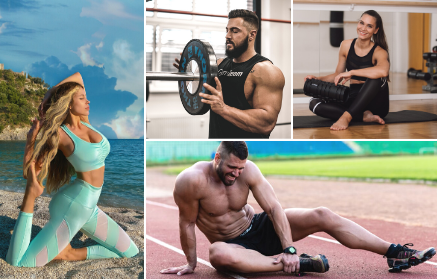
Add a comment